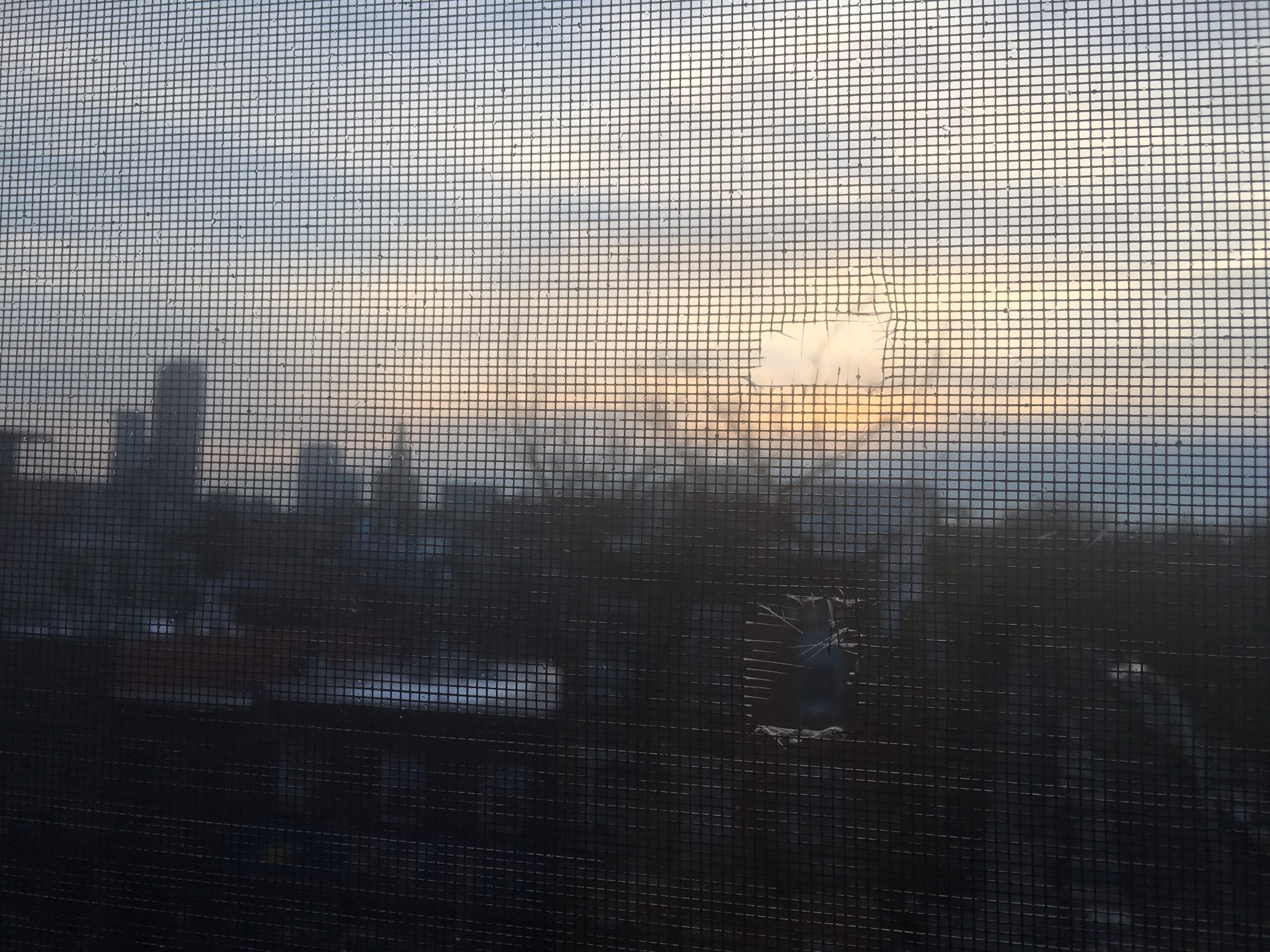
Filtered through branches and clouds and greens, the afternoon sun creates a kaleidoscope of rays and shades and flickers and birds.
“It looks refreshing there,” the others say.
It’s those first few minutes of a call, when not everyone is there, when noting things in the background fills the glitching silence. For a moment, I feel that my here—their “there”—doesn’t have to be the here that it is.
I try to respond. But it’s hard to find easy words to describe a depthless picture hovering behind them.
I really want to say something witty—funny—about the image. It’s one with interiors and exteriors rendered in flat colors, calligraphic accents, decorative patterns, and dynamic lines filling the vertical axis of the page, inhabited by delicately drawn figures in perfect harmony with their almost mythical setting. It’s an illustration from a manuscript I recognize—like anyone working in my field would—by a famed Timurid artist, whose works I teach in one of my classes. I wonder if I should have one of these backgrounds, too.
I saw a few in the Zoom gallery that I liked. Not the smart—but generic—ones you’re supposed to ignore. They’re the ones that make you look like you’re suspended above the Arctic circle or aimlessly drifting within the dark matter between planets, like you’re not really somewhere. I wondered, if I saw one of these settings behind me, would I feel like I was nowhere? Would I believe it? Would the background only disguise what I see on the screen, not what my eyes are really looking at?
But it would cover up the odd crack in the sliding doors’ glass behind me. No, not a crack. More like a yawning split. One part of the aluminum frame that wraps around the left door’s glass panel was knocked out of place from the ripple of shockwaves that somehow dislodged it from the edge it encased. But, maybe by chance, the displaced frame didn’t completely fall off, even when sturdier ones collapsed like Jenga blocks a few feet away. This usually unremarkable piece of metal, stubbornly connected to the door frame’s upper right corner, clings on, dangling uselessly in the resultant lopsided opening, between the two window panes, that starts as a sliver at the top—where the glass and broken metal frame connect—and widens as you go down. By the time you’re at the bottom, the space is big enough to fit a few fingers—or paws. An exposed rubber strip, that’s usually hidden as it cushions the glass, gently swings between the unsheathed pane and broken frame. The unframed frame and window with gaps somehow subsist in the space between function and dysfunction, even though, together with the black strip, they should create a seal between the two doors when the sliding is just right. But now it clearly isn’t. Right.
I should get that fixed.
But I keep forgetting. Or I keep remembering. Then I think about how minor this crevice—that just fits a few paws—is in the wider scheme of things. Of the here that is our now.
Looking at the screen, I realize that it’s getting dark. Not outside, but in the space between the frame and me in the call. I wonder if I should change the lighting in the room—the one I’m physically in. It doesn’t feel dark. But it clearly looks so on and around the image of me that matters, the one that others can see. I realize it could be one of the lights (on the ceiling above me) that’s burnt. When did it blow out? I forget. It would be easy to add it to the tally of the city’s remnants, like the crack in my window. But how does a bulb burst under pressure—under blasting waves—if the glass fixture encasing is still intact?
It makes me wonder if all glass is glass, or if some only looks like it. Like the planets and northern lights and hillsides and patterned drawings floating behind the talking heads on my screen. The backgrounds stay the same, only briefly rippling as people disappear behind them into their “over there,” guarding gapless windows and working lights and normalcy.
I need to remember to have that bulb changed.
As the me on the screen transforms into sharp lines and shadows, shades of oranges and reds and browns and blacks, I notice that the greens and shimmers and other worldliness of earlier have disappeared. I start to shift uneasily. I try to pass it off as stretching, but I know it’s because I don’t want the others to see the changing hues behind—around—me. I don’t want skewed glass doors exposed.
Should I jump up and shut the blinds? Maybe I can turn on another light? But I don’t want to move. If I do, the space around me won’t shimmer like a virtual background shielding me as I disappear from the screen. I suddenly feel like something inside me is clawing, trying to find the space to expand, but with each short breath, I realize that there’s only the shrinkage of my body. I try to focus again on the screen, but I try not to look at myself in it.
I think again about the backgrounds I choose not to use. I wonder why I refuse to have one floating behind me despite the protective aura it can wield. Is it the deception I fear? That, if I ever used one, it wouldn’t make me feel the way it makes me look? That it wouldn’t help me forget about the paws stuck in gaps, the lights casting shadows, and our here not there?

Hala Auji
Hala Auji is a writer and art historian living in Beirut. She’s an assistant professor at the American University of Beirut where she teaches courses on the art, architecture, and material culture of the Middle East and the historical Islamic world. Her work focuses on the visual dimensions of modernity in the eastern Mediterranean, including print culture, book history, museum practices, and portraiture. She’s the author of Printing Arab Modernity: Book Culture and the American Press in Nineteenth-Century Beirut (Brill, 2016).



